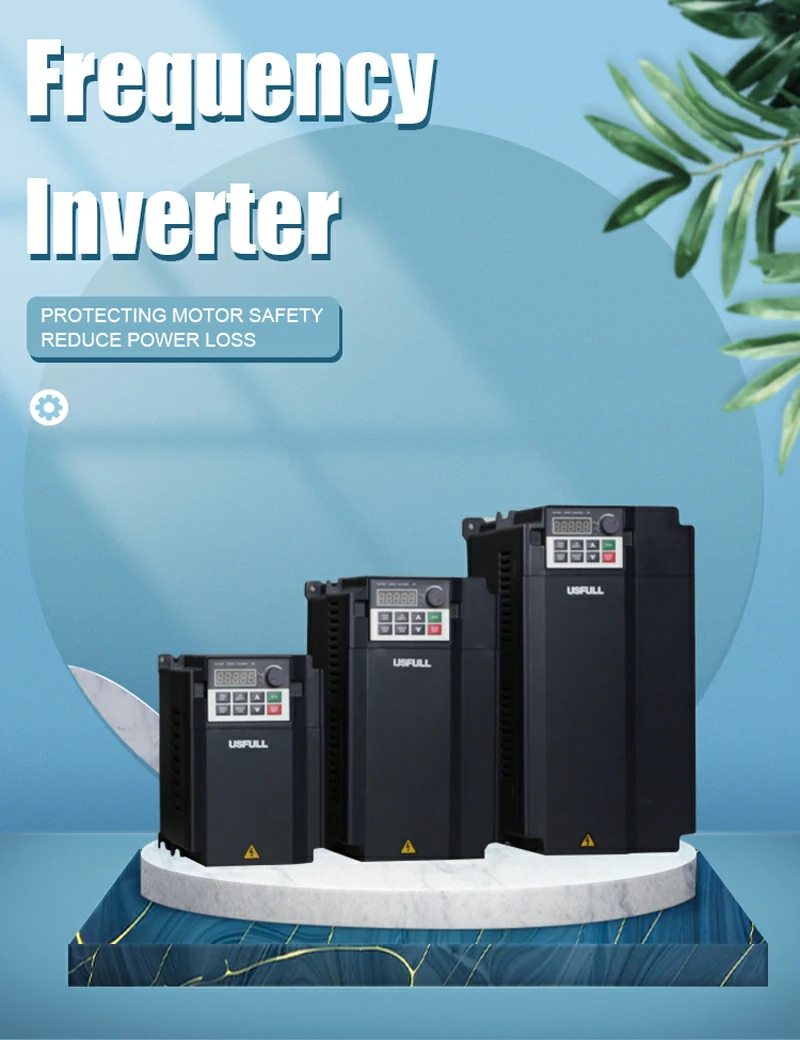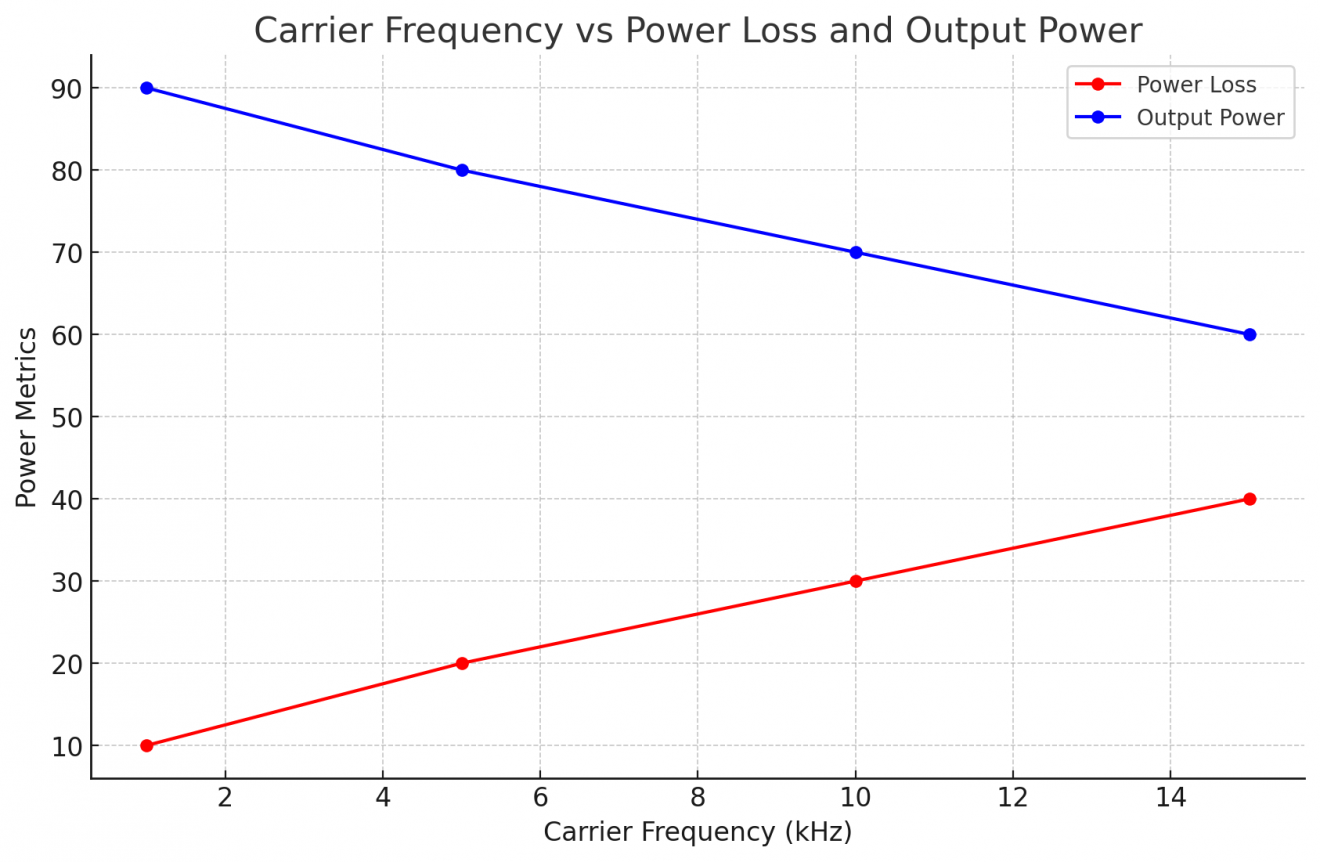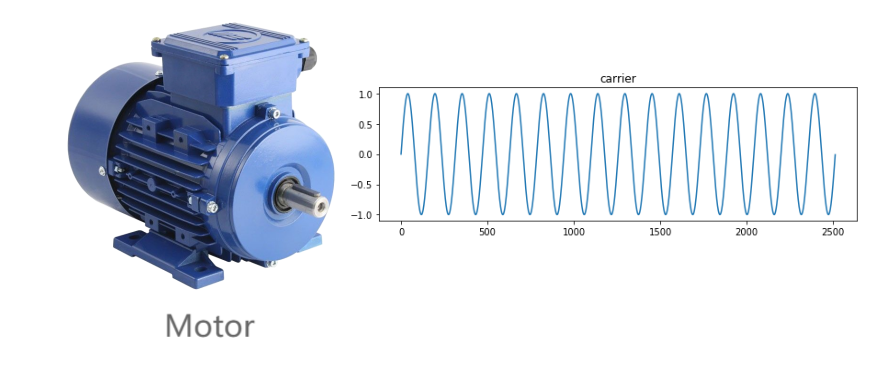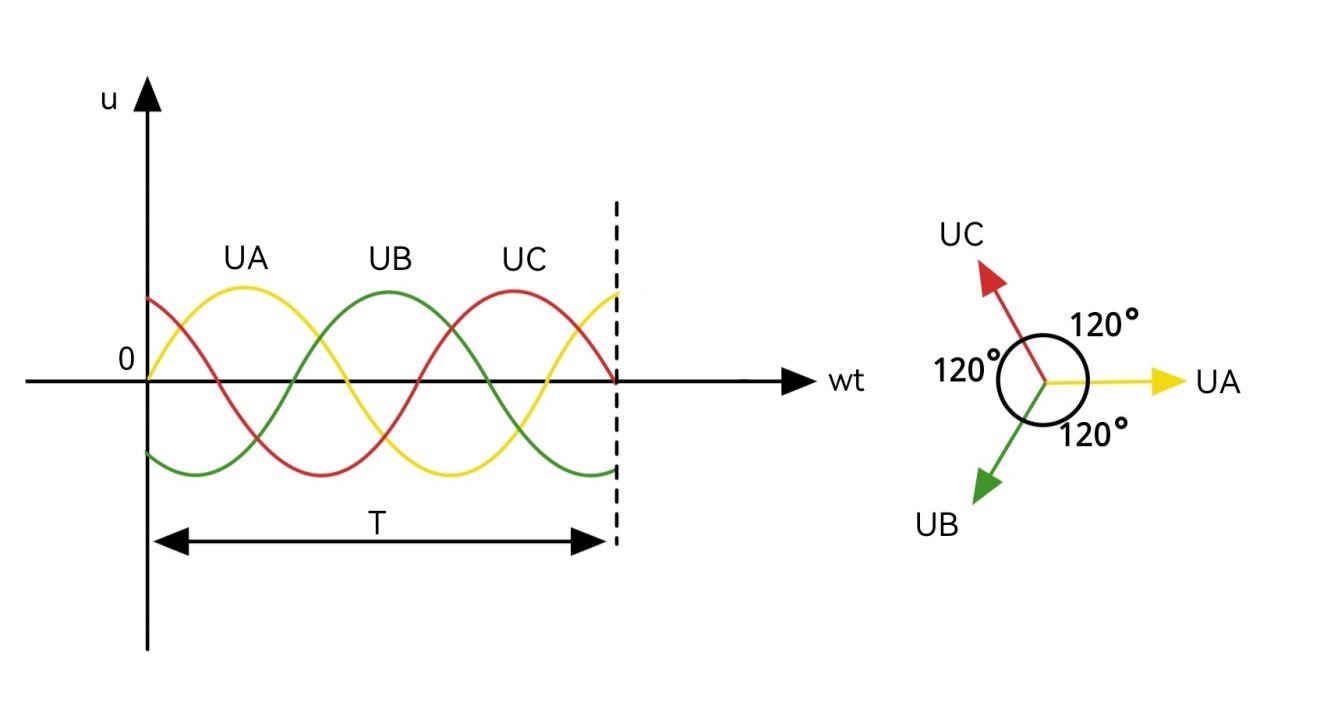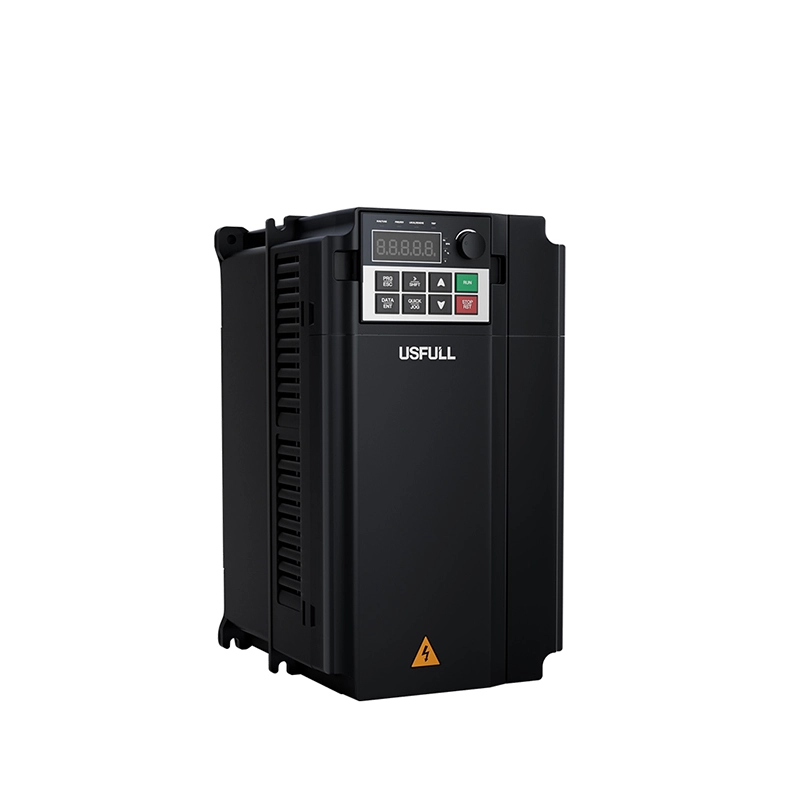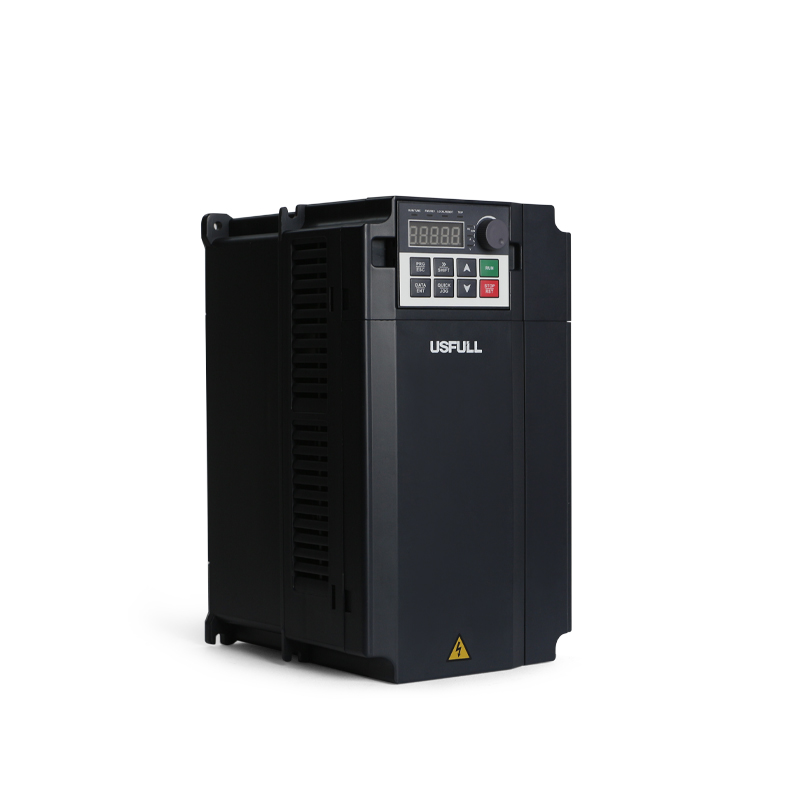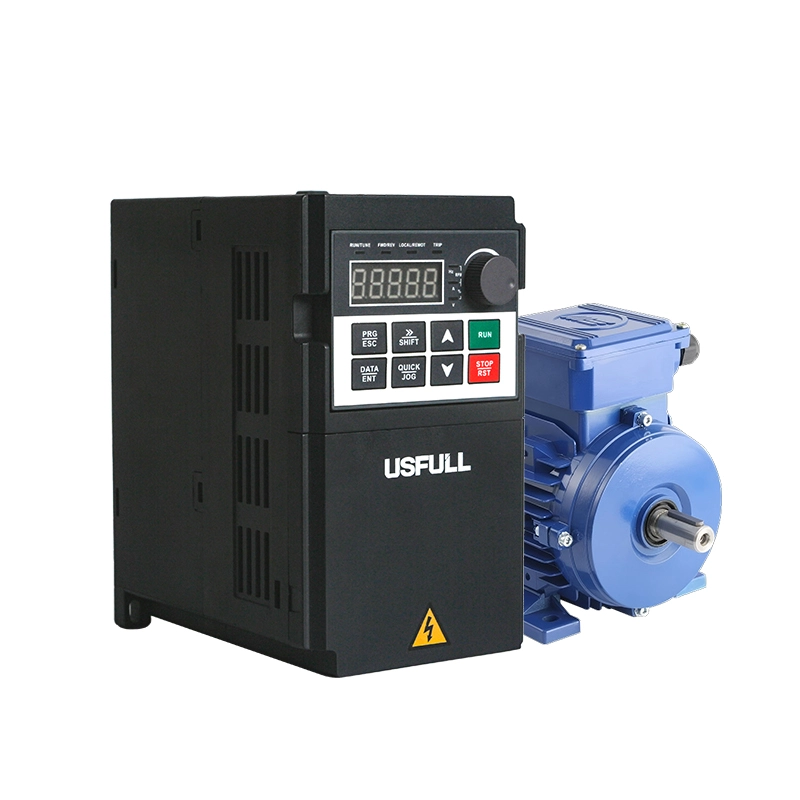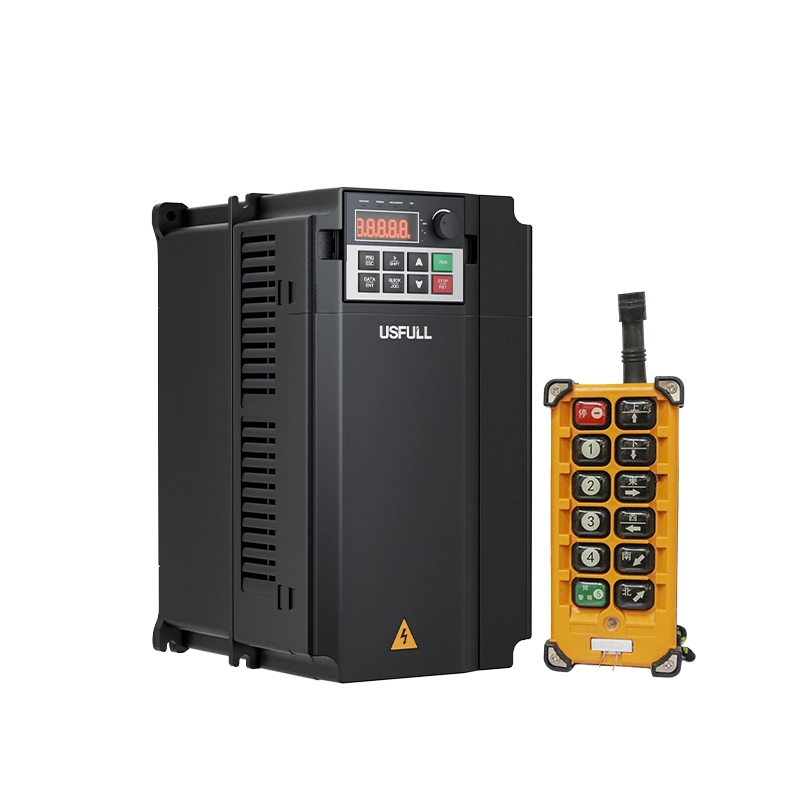Introduction
Variable Frequency Drives (VFD), also known as frequency converters, frequency inverters, predominantly use Pulse Width Modulation (PWM) to achieve frequency conversion. This involves generating a series of pulses with varying widths and intervals to form the output voltage. The size and shape of these pulses are determined by the intersections of the modulation wave and the carrier wave, known as the carrier frequency. The carrier frequency significantly impacts the performance and efficiency of these devices. Properly adjusting the carrier frequency is essential for minimizing system noise, achieving smooth waveforms, and reducing interference.
What Is the Carrier Frequency of Low-Voltage Frequency Converters?
Carrier frequency refers to the frequency at which the power electronic devices within the VFD switch to create the variable output frequency required to control the motor. In low-voltage frequency converters (≤ 500V), the primary control method is sine-wave pulse width modulation (SPWM), where the carrier frequency is adjustable, typically ranging from 1 kHz to 15 kHz. Although users often rely on the manufacturer’s preset values, it is crucial to adjust the carrier frequency based on the actual operating conditions. Incorrect carrier frequency settings can negatively impact the performance and efficiency of the frequency converter. The following sections provide guidelines for selecting the appropriate carrier frequency.
Carrier Frequency and Frequency Converter Power Consumption
The power consumption of a frequency converter is directly influenced by its carrier frequency. Higher carrier frequencies result in increased switching losses in the power electronic components, leading to higher power consumption. Conversely, lower carrier frequencies reduce switching losses but may affect the smoothness of motor operation. Therefore, optimizing the carrier frequency is essential for balancing power consumption and operational performance.
The Influence of Carrier Frequency on Ambient Temperature
The ambient temperature has a significant impact on the performance and reliability of frequency converters. High carrier frequencies combined with high ambient temperatures can stress the power modules, reducing their ability to handle continuous output currents. To ensure the safe and reliable operation of the IGBT, it is necessary to adjust the carrier frequency and consider the ambient temperature when setting the frequency converter’s parameters.
Carrier Frequency and Motor Power
For high-power motors, it is generally advisable to use lower carrier frequencies. This reduces interference with other equipment, lowers power consumption, and decreases heat generation. While different manufacturers may have specific recommendations, the general principle is to balance performance and efficiency by selecting an appropriate carrier frequency for the motor’s power rating.
The Relationship Between Carrier Frequency and the Length of the Secondary Output (U, V, W) of the Frequency Converter
The length of the secondary output cables (U, V, W) also affects the choice of carrier frequency. As the output cable length increases, so does the leakage current. To manage this, the carrier frequency should be adjusted accordingly:
- For cable lengths < 50m: 15 kHz
- For cable lengths 50-100m: 10 kHz
- For cable lengths 100-150m: 5 kHz
- For cable lengths 150-200m: 1 kHz
| Carrier Frequency (kHz) | Line Length (m) |
| 15 | < 50 |
| 10 | 50 – 100 |
| 5 | 100 – 150 |
| 1 | 150 – 200 |
What Is the Impact of Carrier Frequency on the Output Current of Frequency Converters?
Carrier frequency affects the harmonic content of the output current of frequency converters. Higher carrier frequencies tend to produce lower harmonic distortion, resulting in a cleaner output current waveform. This can improve the performance and lifespan of connected motors and other equipment. However, it also increases switching losses, impacting efficiency. Therefore, balancing harmonic reduction and efficiency is crucial when setting the carrier frequency.
What Are the Effects of Carrier Frequency on Motors?
Noise and Vibration
Higher carrier frequencies reduce motor noise and vibration, making operation quieter and smoother. However, they also increase the frequency of harmonic currents, exacerbating the skin effect in the motor stator and increasing motor losses. Using an appropriate carrier frequency minimizes noise and vibration while ensuring efficient motor operation.
Heating
The carrier frequency affects the motor’s heating characteristics. Higher frequencies improve the current waveform but also increase the motor’s temperature due to additional harmonic currents. To mitigate this, use higher carrier frequencies with additional cooling measures, such as AC reactors, or opt for specially designed inverter-duty motors.
Unbalance Between Carrier Frequency and Three-Phase Input Current of Frequency Converter
An imbalance in the carrier frequency can lead to unequal three-phase input currents, causing excessive heating and potential damage to the frequency converter. To minimize this imbalance, consider the following:
- Improve the quality of the power supply to reduce unbalanced input voltages.
- Select high-quality frequency converters.
- Increase the carrier frequency where appropriate.
- Adjust the phase sequence of the input voltage.
The Relationship Between Carrier Frequency and Electromagnetic Interference
Higher carrier frequencies can increase electromagnetic interference (EMI) due to the high-frequency switching of the power electronic components. EMI can affect nearby electronic equipment through electrostatic induction, electromagnetic induction, and electromagnetic radiation. To mitigate EMI, use proper shielding, grounding, and filtering techniques, and select an appropriate carrier frequency that balances performance and EMI levels.
Conclusion
In conclusion, the carrier frequency of a frequency converter is a critical parameter that influences power consumption, ambient temperature, motor power, output current, and electromagnetic interference. Understanding these impacts and optimizing the carrier frequency is essential for achieving efficient and reliable operation in various applications.

